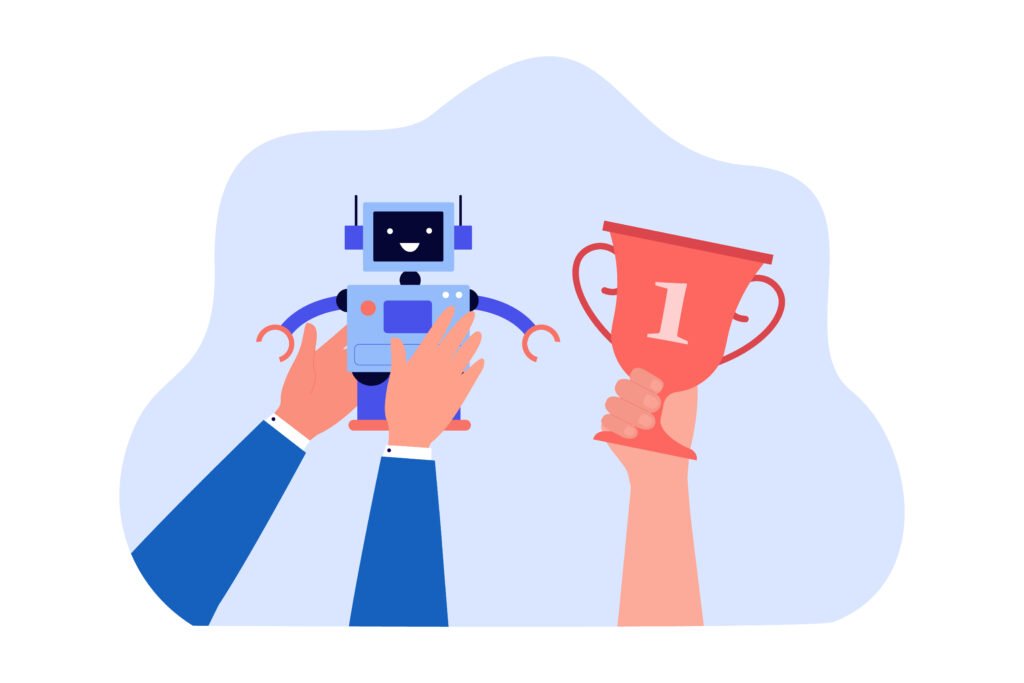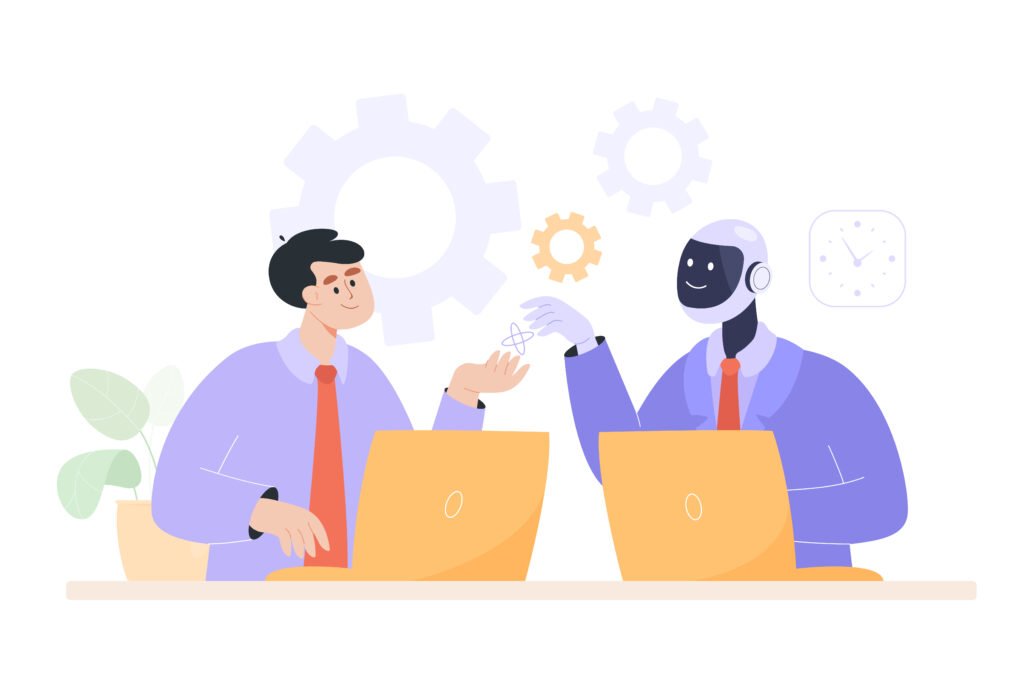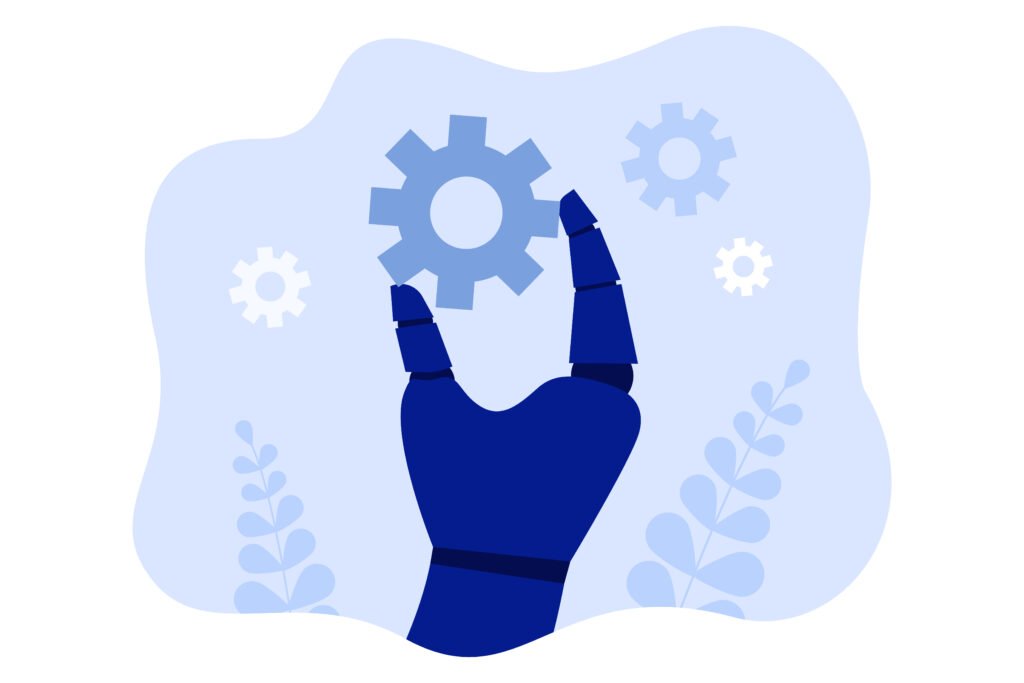- The Scope of Chat GPT in Software Development
- Chat GPT as a Developer's Assistant: How Can Chat GPT Help With Coding?
- The Collaborative Paradigm: Human and AI Working Together
- Ethical and Security Considerations
- Integrating Chat GPT into Software Development Workflow
- Chat GPT: Friend or Foe to Programmers?
- Conclusion
Will Chat GPT Replace Programmers? Exploring the Role of Chat GPT in Software Development
6 Sep 2023
Igor Kelly

Chat GPT, a revolutionary AI, marries the intricacies of coding with the fluidity of conversation. With the advent of AI-driven language models, we stand at the crossroads of a paradigm shift, where crafting code becomes an engaging dialogue between human creativity and machine intelligence.
In this riveting journey, we embark on a quest to understand whether Chat GPT’s true capabilities have the potential to eclipse the traditional roles of programmers or if end-of-the-world scenarios are true. Join us as we navigate the intricate web of technology, innovation, and the relentless human spirit that drives the evolution of software development.
The Scope of Chat GPT in Software Development
Chat GPT (Generative Pre-training Transformer Model (GPT) is an artificial intelligence model specialized in Natural Language Processing (NLP). It was developed by OpenAI and trained through a large amount of data and text to generate and understand natural language.
The development of Chat GPT dates back to 2018 when OpenAI presented the first model with this name. Over time, OpenAI has released several versions of ChatGPT that have grown in size, complexity, and data availability. In June 2020, Chat GPT-2 was presented, which has 175 billion neurons and was trained on a data volume of 45 terabytes.
The core tasks Ideal for ChatGPT assistance are:
- Automated customer conversations
ChatGPT seamlessly steps into the shoes of customer service representatives, handling intricate inquiries with finesse. Imagine an e-commerce platform where Chat GPT navigates through product queries, guides customers in their purchase decisions, and even troubleshoots technical issues, all in a conversational manner.
- Text completion
In the realm of content creation, Chat GPT functions as a creative co-writer, enhancing efficiency and output. For instance, a journalist racing against deadlines can utilize Chat GPT to swiftly generate intros, summaries, or even entire paragraphs, enabling them to deliver news articles promptly without compromising quality.
- Performing translations
Chat GPT effortlessly bridges language barriers, facilitating global communication. For instance, an international business negotiates a deal with foreign partners. ChatGPT’s translation ensures smooth conversations, allowing each party to converse fluently in their native language.
These vivid applications showcase how ChatGPT’s core functions extend beyond mere algorithms, embedding themselves in our daily lives and reshaping how we interact, create, and connect.
ChatGPT Limitations
In language generation, models like ChatGPT excel in predicting concise, standardized texts such as product descriptions, potentially replacing human-written content in certain cases. Automation thrives in standardized domains.
However, authors, journalists, and software developers won’t be rendered obsolete. The intricacies of capturing complex relationships, such as causality and temporal categories, remain challenging for conversational AI.
Most importantly, analysis ability and creativity are the most important characteristics distinguishing a human-written code from an AI. Even if it is tempting to let an algorithm do as much (diligent) work as possible, you should always be aware that it makes mistakes, which it admittedly packages very credibly.
Chat GPT as a Developer’s Assistant: How Can Chat GPT Help With Coding?
In programming, ChatGPT’s versatile capabilities find applications in many ways. Software developers increasingly use Chat GPT to write code snippets, optimize and refactor code, create front-end elements and responsive designs, and more, thus partly automating their coding process, reducing human error, and saving time for high-level, strategic tasks. Check out the list of the most popular use cases below.

- Code generation. ChatGPT can generate complex pieces of code, accelerating software development.
A web development company faced the challenge of creating HTML/CSS templates for their client’s websites within a limited time frame and turned to ChatGPT for a solution. By harnessing AI for code generation, the company expedited the template creation process while maintaining design flexibility.
- Autocompletion. ChatGPT suggests code snippets, improving speed and accuracy.
A software development team worked on a complex data analysis project using Python. As they were writing code to process and manipulate large datasets, they often found themselves typing out complex function names, which increased the likelihood of errors.
Integrating AI into software development drastically improved the coding speed and elevated the codebase’s accuracy by minimizing typos and syntax errors. This allowed the development team to focus more on the logic and architecture of their code rather than getting bogged down by repetitive typing.
- Bug detection and code refactoring. ChatGPT can identify potential bugs or areas for code optimization.
A team of software developers was collaborating on a Java project to build a comprehensive e-commerce platform. As the project grew in complexity, so did the codebase, making it increasingly challenging to identify potential bugs and areas for optimization.
The team utilized ChatGPT to analyze snippets of the Java codebase. While reviewing a complex module responsible for handling user authentication, ChatGPT flagged an unused variable that had inadvertently been left in the code. Not only did ChatGPT identify the issue, but it also provided suggestions for removing the unused variable, resulting in cleaner and more efficient code.
- Documentation generation. ChatGPT aids in generating code documentation and enhancing project clarity.
A software development team was working on a complex project involving creating a RESTful service to manage a vast database of user profiles. To streamline this process and ensure comprehensive documentation, the team integrated ChatGPT’s documentation generation capabilities.
By feeding ChatGPT a description of each API endpoint, the team obtained detailed documentation outlining the purpose, input parameters, response structure, and usage examples. This automated documentation enhanced project clarity and facilitated the onboarding process for new developers.
- Algorithm design. ChatGPT can assist in designing algorithms, providing insights into complex problem-solving.
In a data-driven startup aiming to optimize its product recommendations, the technical team faced the challenge of designing an algorithm to sort through vast amounts of user data and preferences efficiently. By inputting information about the desired outcomes, ChatGPT provided suggestions for crafting a sorting algorithm that significantly improved the speed and accuracy of product recommendations.
Exploring Chat GPT’s potential in coding can become your competitive edge. Lightpoint experts will happily help you choose the most profitable tech stack, including AI-powered tools, to skyrocket your software project. As an experienced software product and application development company, we facilitate your success and market share expansion through solid development practices.
The Collaborative Paradigm: Human and AI Working Together
Developers and ChatGPT form a powerful partnership that leverages the unique strengths of both humans and AI. Developers possess intricate domain knowledge, creativity, and the ability to grasp complex project nuances. Chat GPT, on the other hand, offers unparalleled speed, accuracy, and data processing capabilities. This collaboration lets developers offload routine tasks such as code generation, documentation, and bug detection to Chat GPT, allowing them to focus on higher-level architecture, problem-solving, and innovation.
Additionally, when preparing developers for AI collaboration, it is important to refine Chat GPT responses for greater relevance and coherence. The ability to use Chat GPT to write code offers developers a versatile tool that aids in generating code snippets and supporting their coding endeavors. Together, they create a symbiotic relationship that fosters increased productivity that might otherwise be challenging to achieve independently.
But there is one essential but. While ChatGPT excels at generating responses, it cannot deeply understand context and intent as humans do. Human oversight is vital to interpret and validate the generated content, ensuring accuracy, relevance, and alignment with the project objectives.
Without this oversight, there’s a risk of generating misleading, inappropriate, or incorrect information that could negatively impact the software’s functionality and user experience.
Below, we’ll also look at ethics and software security concerns in more detail.
Ethical and Security Considerations
ChatGPT’s responses are based on patterns in the data it was trained on, which can sometimes inadvertently produce biased, discriminatory, or offensive content. Human oversight is crucial to review and mitigate potential ethical and legal issues, ensuring that the AI-generated content adheres to ethical standards, respects user privacy, and complies with relevant laws. Failure to exercise this oversight could result in unintended consequences and legal liabilities, compromising the project’s reputation and legality. Here are a few examples.
- A content creator used ChatGPT to generate blog posts without proper attribution. The AI-generated content closely resembled existing articles, resulting in accusations of plagiarism and violating intellectual property rights.
- A software developer integrated code snippets generated by ChatGPT into their project without acknowledging the source. The code resembled an open-source library closely, leading to copyright infringement claims and breaching intellectual property rights.
- An artist used ChatGPT to create artwork strikingly resembling a copyrighted painting. The AI-generated art was unintentionally used in a commercial campaign, leading to legal action due to copyright infringement and a breach of intellectual property rights.
Besides ethical concerns, AI augmentation in software development raises serious considerations regarding cybersecurity, as it is paramount to prevent potential risks and vulnerabilities. We have compiled a list of general recommendations for avoiding potential threats.
- Implement access controls and authentication mechanisms to restrict ChatGPT’s usage only to authorized personnel. This prevents unauthorized access and potential misuse of the tool.
- Sanitize input and output data exchanged with ChatGPT. Malicious input could lead to unintended consequences, including exposure to sensitive information or generating harmful code. You can mitigate the risk of data leaks or security breaches by validating and filtering input and output.
- Continuously monitor and update ChatGPT’s integration. Just like any software component, ChatGPT may have vulnerabilities that need patching. Regularly update the model, review its usage, and assess potential security threats to maintain a robust and secure development environment.
Nevertheless, it is important to remember that the level of security can vary greatly depending on the project’s complexity. How to ensure the highest level of security for your software? Reach out for an IT consultation provided by Lightpoint’s industry experts, who are aware of hidden milestones and the most common bottlenecks.
Integrating Chat GPT into Software Development Workflow

Companies with an agile mindset are usually better able to adapt to changing market conditions and timely react to changes. They can quickly develop and test new ideas and are open to changes and improvements. Furthermore, such companies value collaboration and communication and foster an open, transparent culture that enables employees to reach their full potential.
Agile practices help organizations be more flexible and adaptable. How to seamlessly incorporate Chat GPT in the developer’s toolbox?
- Efforts and courage are not enough without purpose and direction. Clearly outline the purpose of integrating ChatGPT into your software development workflow. Determine whether it’s for code generation, documentation, or other tasks to ensure focused and effective implementation.
- Priority is a function of context. Provide precise context when interacting with ChatGPT to enhance accuracy. Specify programming language, task details, or relevant code snippets to receive more relevant and coherent responses.
- Learning never exhausts the mind. Regularly fine-tune ChatGPT by incorporating feedback and updating it with domain-specific knowledge. This helps tailor its responses to your specific software development needs.
- Render unto Caesar the things that are Caesar’s. Integrate human review into the process, especially for critical tasks. Verify the generated code, documentation, or suggestions to maintain quality and prevent potential errors.
- Be aware, be prepared, and be safe. Prioritize data security and compliance. Ensure ChatGPT is used under your organization’s policies, safeguarding sensitive information during integration.
Chat GPT: Friend or Foe to Programmers?
The future of Chat GPT and developers focuses on working hand-in-hand. One key area is automating repetitive tasks, where AI-based tools aid in tasks like code snippet creation, software testing, and documentation. This frees up developers for more intricate work. Additionally, AI empowers developers to discern patterns in vast data, using machine learning for enhanced software predictions and error detection, expediting development.
Despite the abovementioned benefits, concern “Will chat GPT replace developers?” persists. While advanced AI could optimize software, it’s vital to recognize that software development demands technical knowledge, creativity, and critical problem-solving. AI excels in automation and pattern recognition, but the human element — understanding requirements, innovation, and AI system control — remains irreplaceable. Developers’ roles encompass intricate aspects that AI can’t replicate.
Therefore, rather than worrying whether will Chat GPT replace programmers, developers should better see it as a tool that can improve existing processes and make software development safer and more efficient.
Conclusion
The development of ChatGPT is an unprecedented event in the history of technology, and today, IT experts not only ask AI how to use Chat GPT for software development. ChatGPT has become an indispensable tool for professionals across diverse domains by deftly assisting with many company tasks and processes.
Despite the many benefits, companies must consider some serious concerns and risks. Issues such as privacy and confidentiality, the possibility of spreading disinformation, and the impact on the labor market are essential areas that must be carefully monitored and regulated.
However, human qualities such as empathy, creative thinking, and finding innovative solutions come to the fore again, while Chat GPT relieves developers of the assembly line work. It is up to us to use this powerful technology responsibly and ensure that it is used for the benefit of all. To celebrate your own successful AI implementations in software development, contact the Lightpoint team for expert guidance and all-around support.